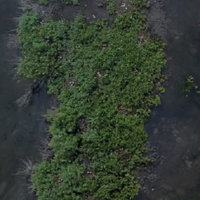Drone assessment of habitat selection and breeding success of Gull-billed Tern Gelochelidon nilotica nesting on low-accessibility sites: a case study

Submitted: 28 August 2020
Accepted: 2 November 2020
Published: 20 January 2021
Accepted: 2 November 2020
Abstract Views: 1435
PDF: 653
Publisher's note
All claims expressed in this article are solely those of the authors and do not necessarily represent those of their affiliated organizations, or those of the publisher, the editors and the reviewers. Any product that may be evaluated in this article or claim that may be made by its manufacturer is not guaranteed or endorsed by the publisher.
All claims expressed in this article are solely those of the authors and do not necessarily represent those of their affiliated organizations, or those of the publisher, the editors and the reviewers. Any product that may be evaluated in this article or claim that may be made by its manufacturer is not guaranteed or endorsed by the publisher.
Similar Articles
- Sandro Casali, Andrea Suzzi Valli, Distribution and density of diurnal and nocturnal birds of prey nesting in the Protected Naturalistic Area of Monte Titano (Republic of San Marino) , Rivista Italiana di Ornitologia: Vol. 82 No. 1-2 (2012)
- Giorgio Marini, Paolo Forconi, Impact of lead shots on a mountain pass in central Apennines , Rivista Italiana di Ornitologia: Vol. 82 No. 1-2 (2012)
- Paolo Giacchini, Atlas of birds in the Province of Ancona , Rivista Italiana di Ornitologia: Vol. 82 No. 1-2 (2012)
- Guido Cattaneo, [The Bee-eater (Merops apiaster) nesting in mountain areas] , Rivista Italiana di Ornitologia: Vol. 88 No. 2 (2018)
- Maurizio Chiereghin, Fabiano Sartirana, [First successful nesting of the Bearded vulture (Gypaetus barbatus) in Piedmont since the beginning of the reintroduction project in the Alps] , Rivista Italiana di Ornitologia: Vol. 89 No. 2 (2019)
- Natale Emilio Baldaccini, The synanthropic status of wild rock doves (Columba livia) and their contribution to feral pigeon populations , Rivista Italiana di Ornitologia: Vol. 90 No. 1 (2020)
- Simone Ottorino Bai, Marco Pantalone, Birds of Metauro river: a great ornithological diversity in a small Italian urbanizing biotope, requiring greater protection , Rivista Italiana di Ornitologia: Vol. 90 No. 2 (2020)
- Salvatore Surdo, Sparrow Passer italiae x hispaniolensis nesting on fishing boat in Sicily , Rivista Italiana di Ornitologia: Vol. 92 No. 2 (2022)
- Corrado Battisti, Mapping breeding birds in a re-naturalized historical fortress: composition, structure and considerations about abundance vs. biomass comparisons , Rivista Italiana di Ornitologia: Vol. 93 No. 2 (2023)
- Fulvio Fraticelli, Carla Marangoni, [The Great grey Shrike Lanius excubitor L. of the Arrigoni degli Oddi’s ornithological collection at the Museo Civico di Zoologia, Rome (Italy)] , Rivista Italiana di Ornitologia: Vol. 88 No. 1 (2018)
You may also start an advanced similarity search for this article.


 https://doi.org/10.4081/rio.2020.475
https://doi.org/10.4081/rio.2020.475



